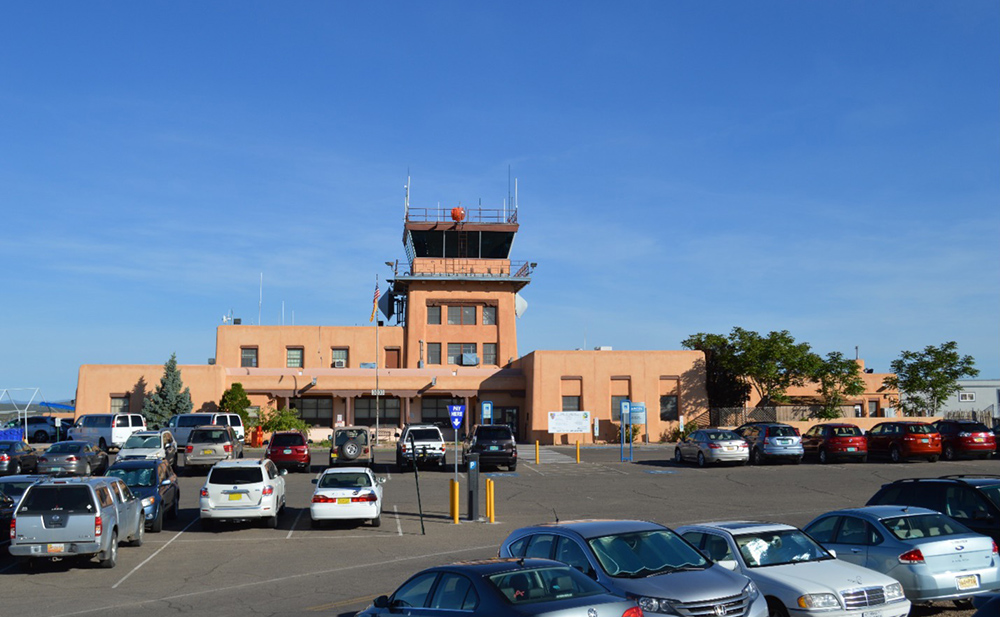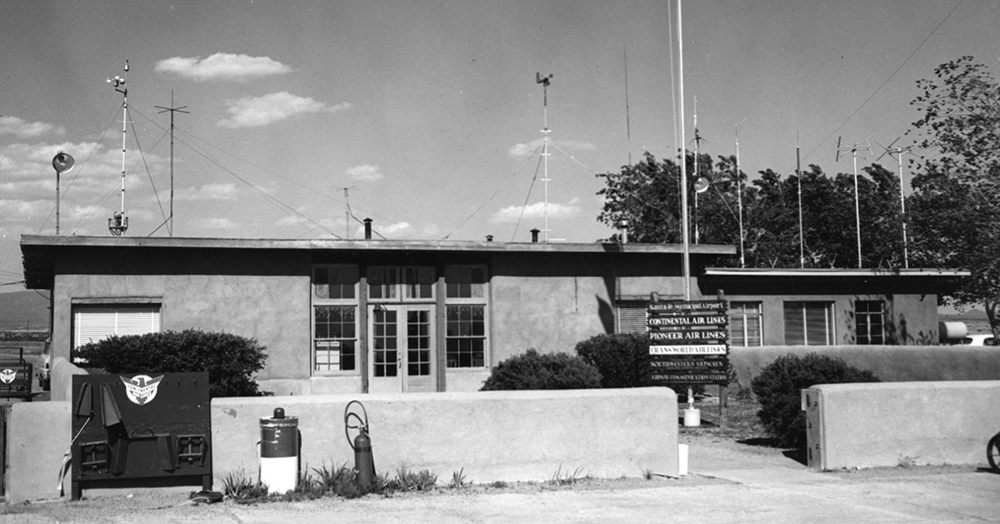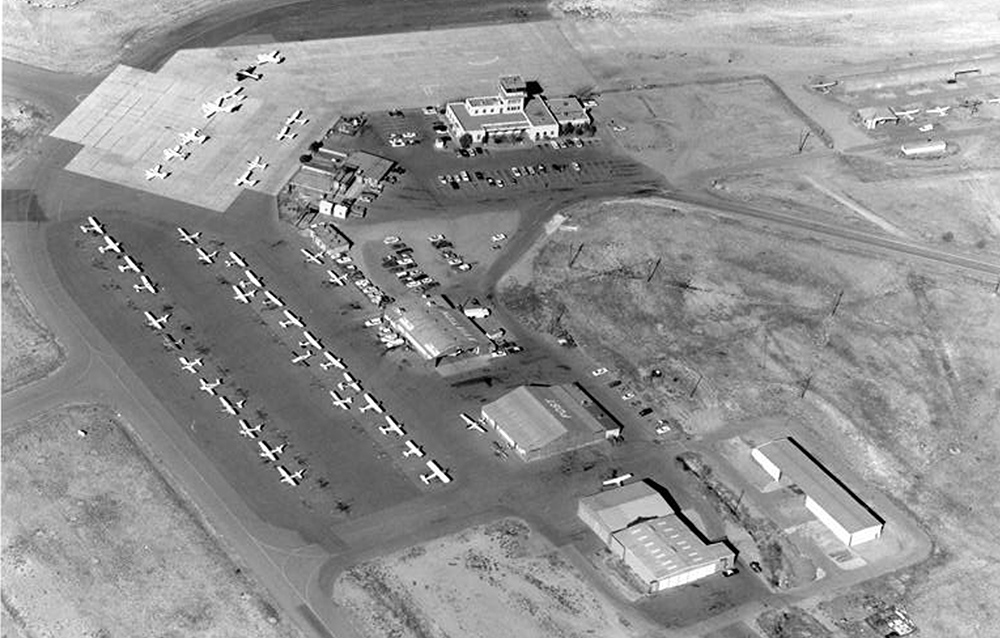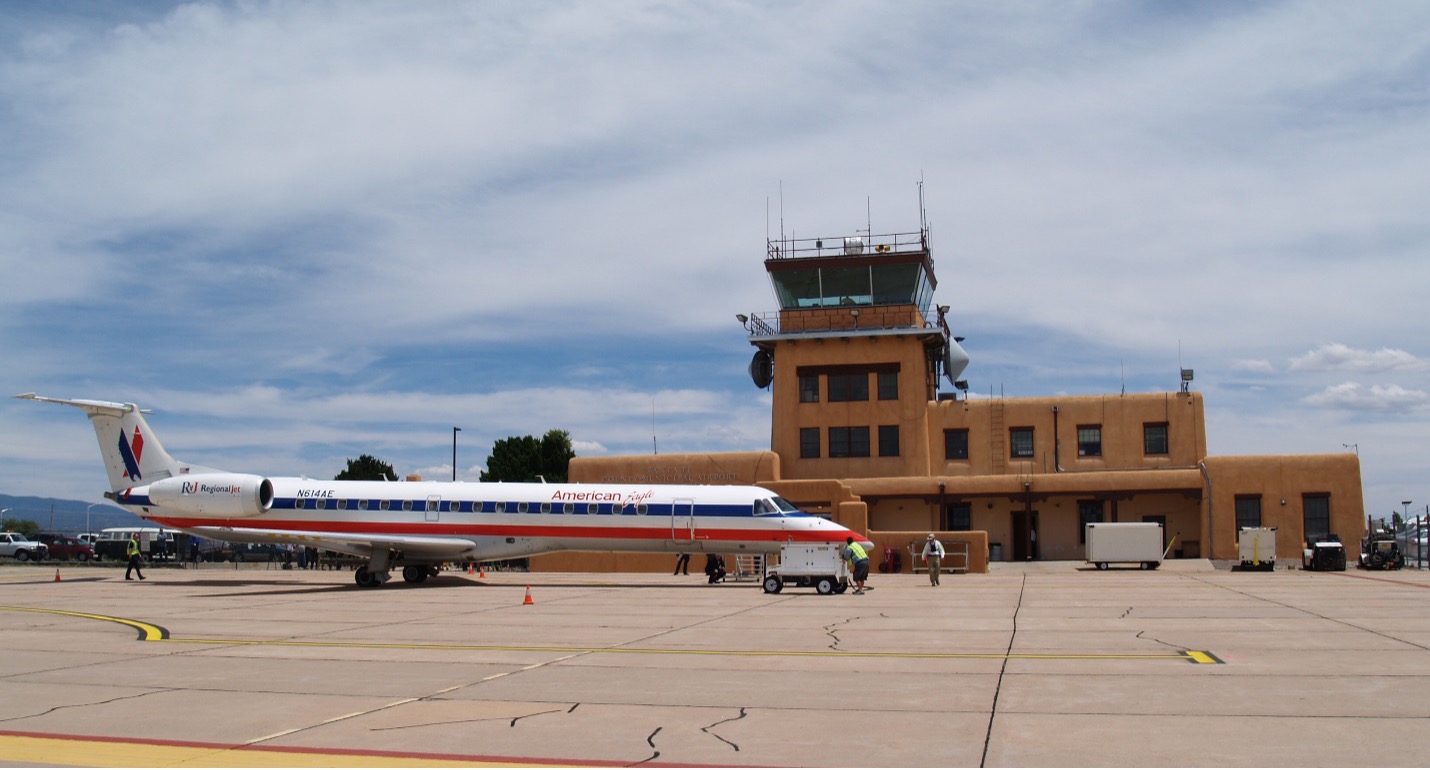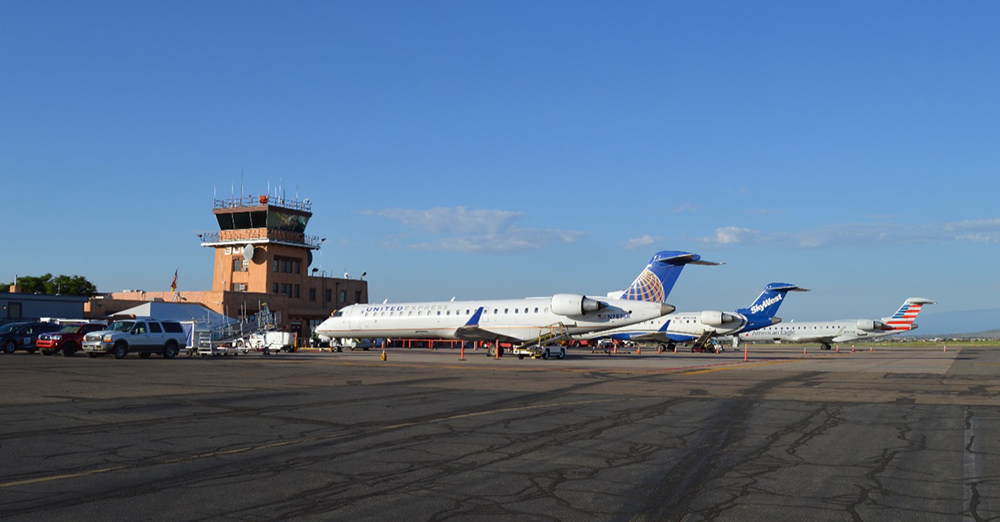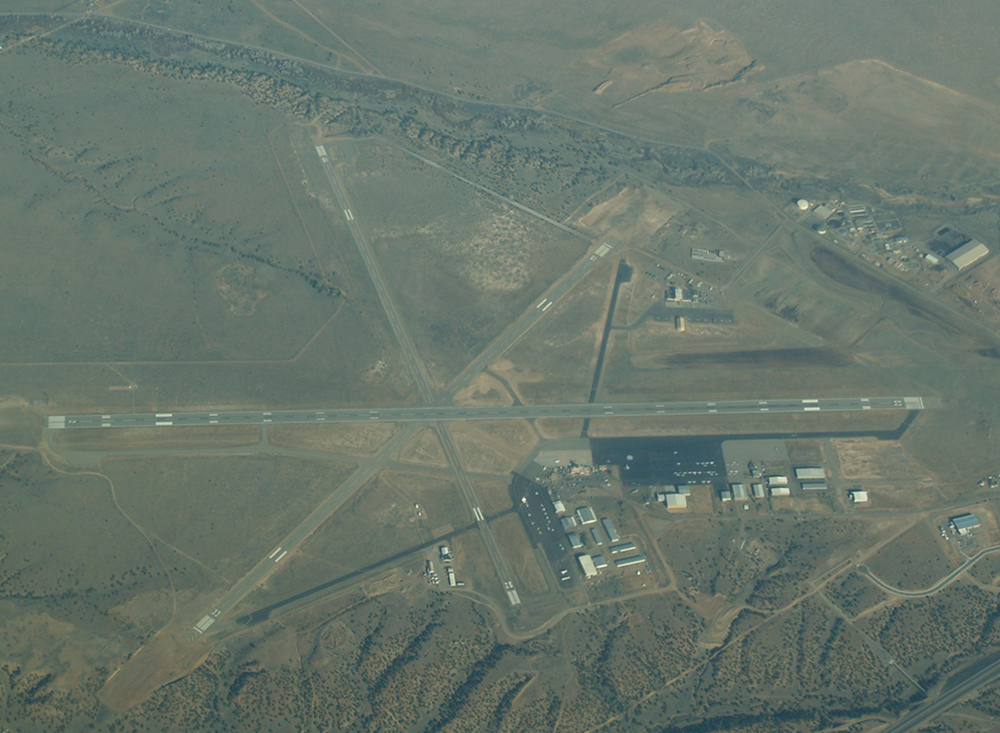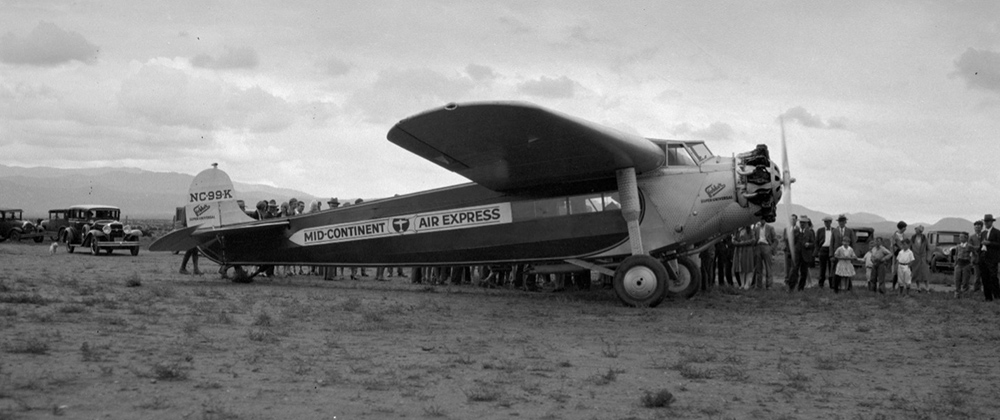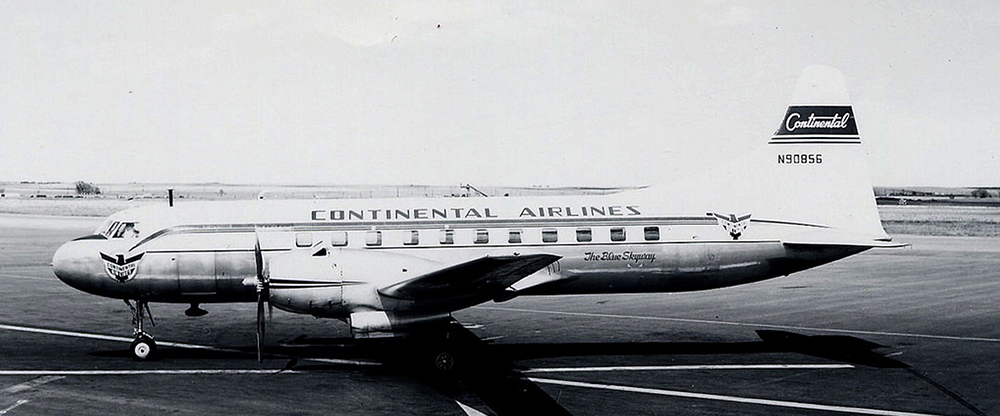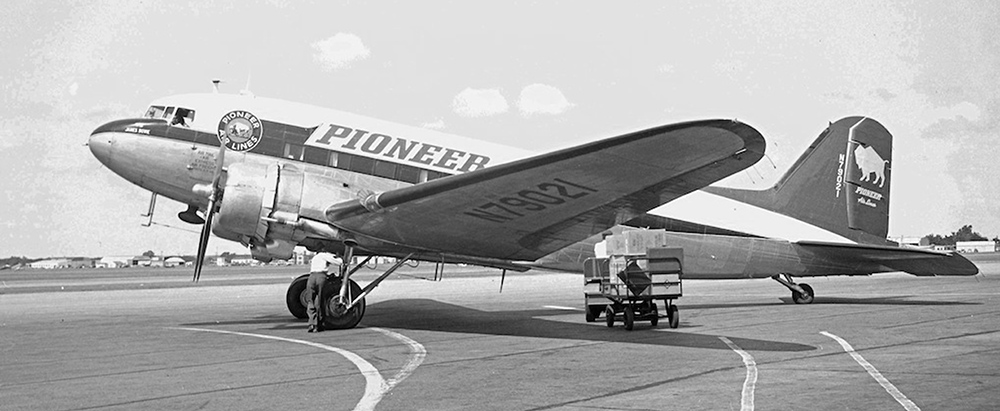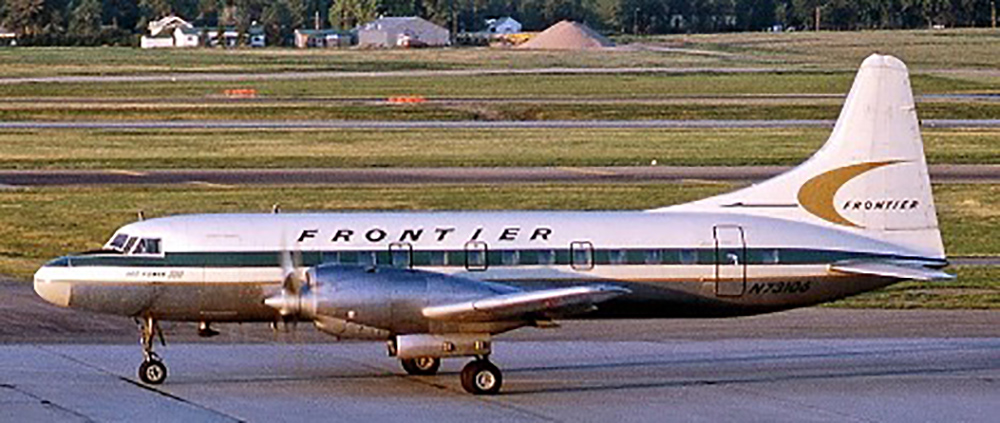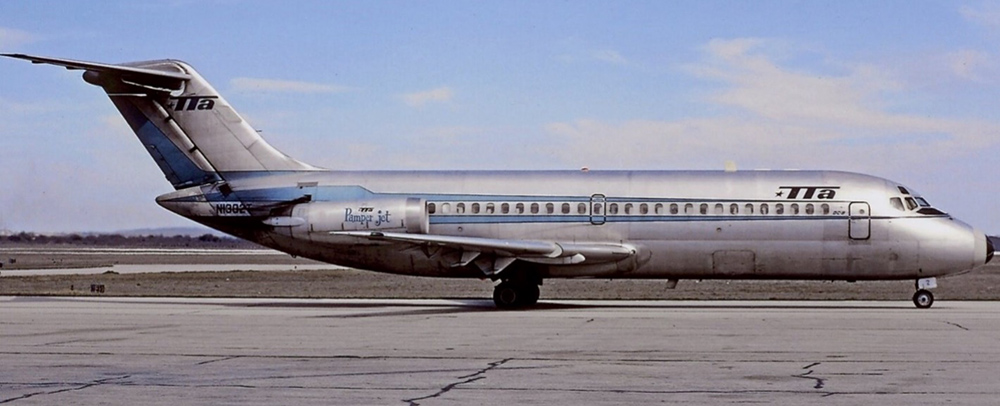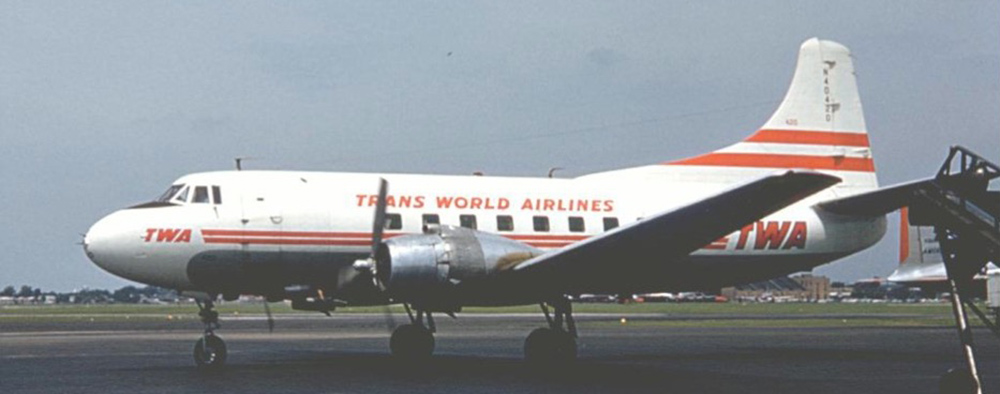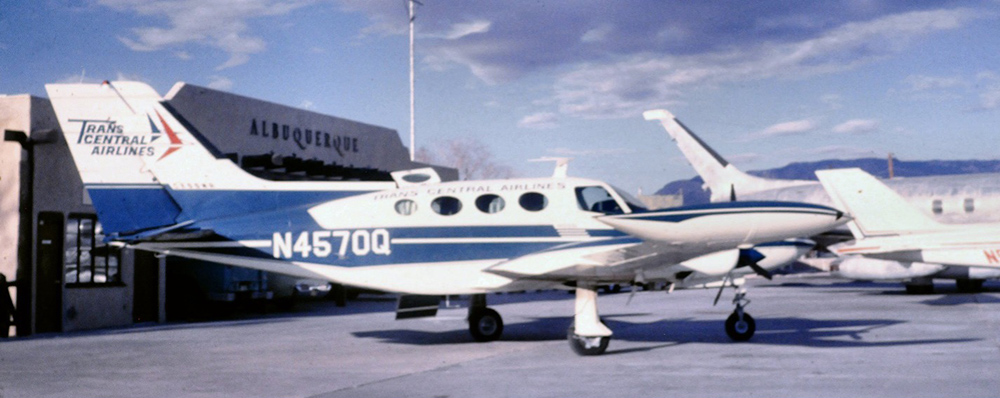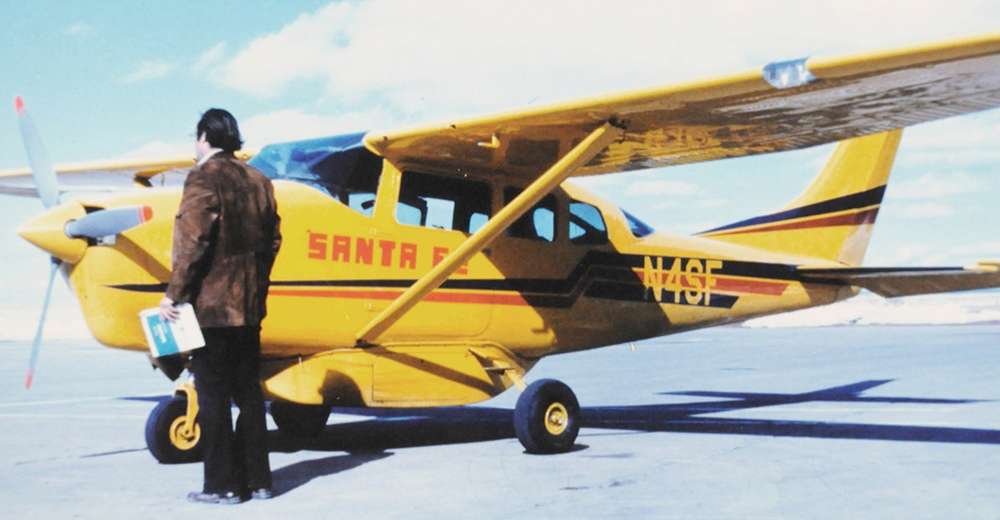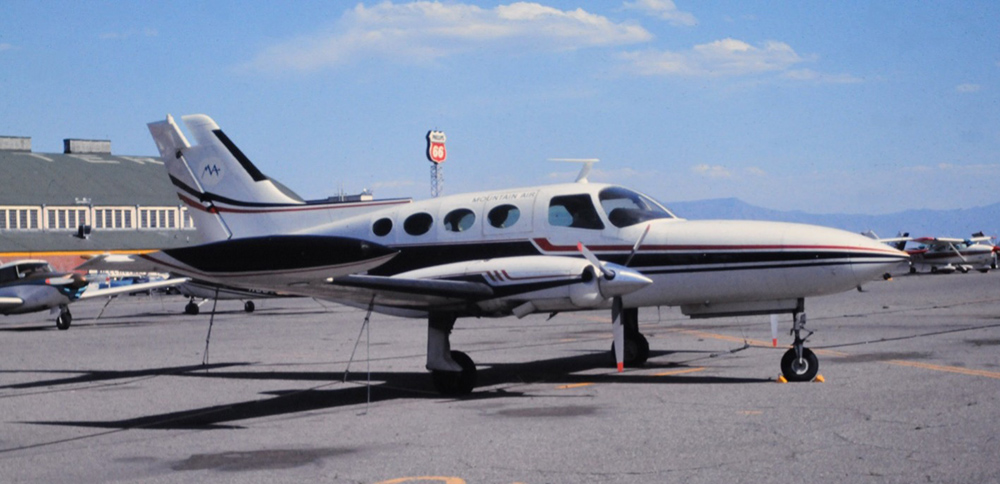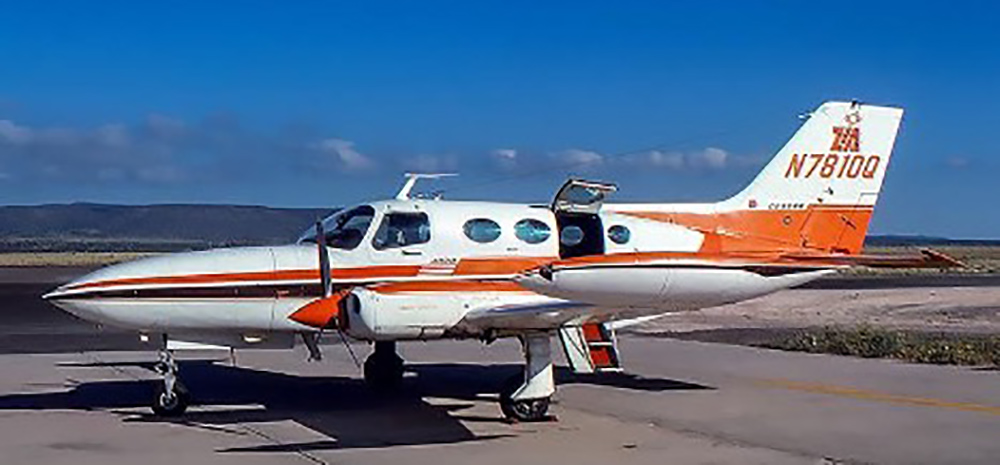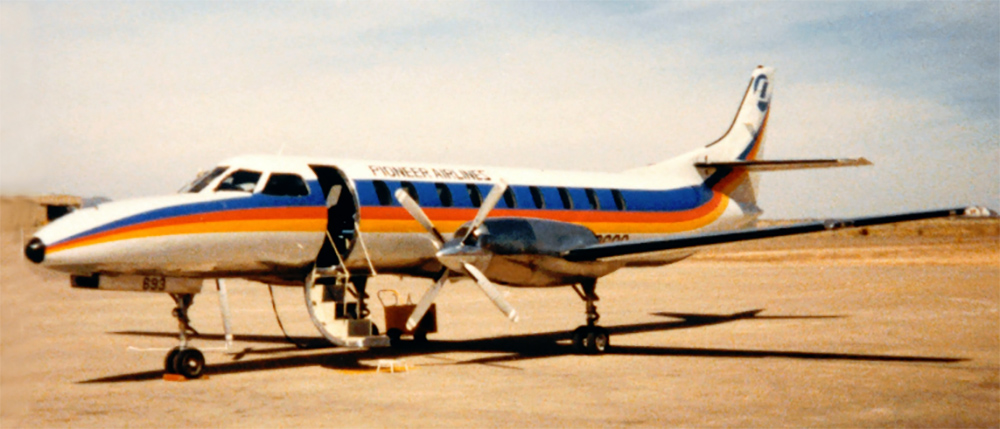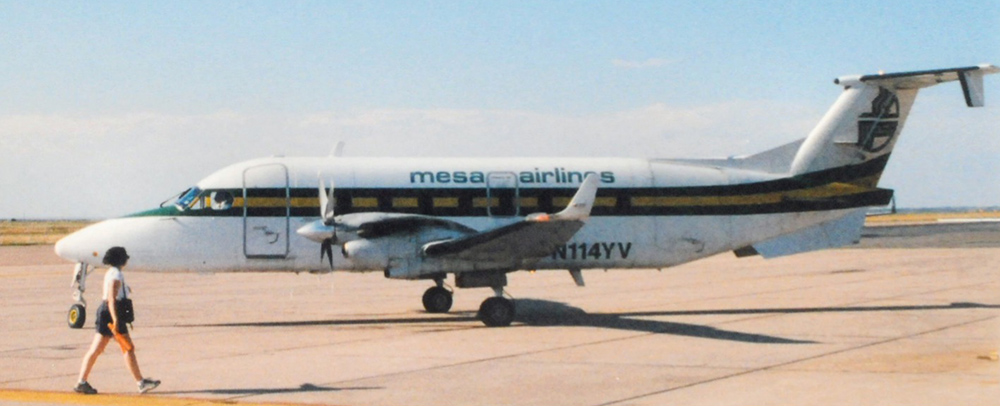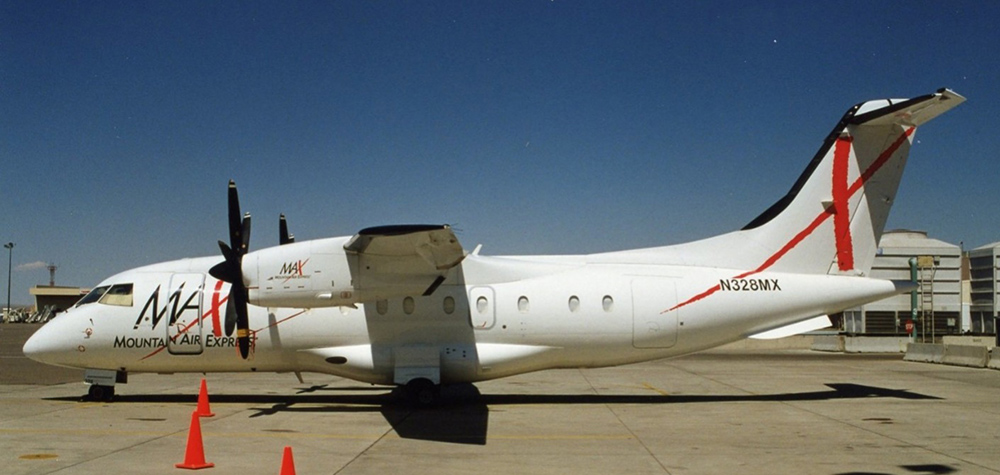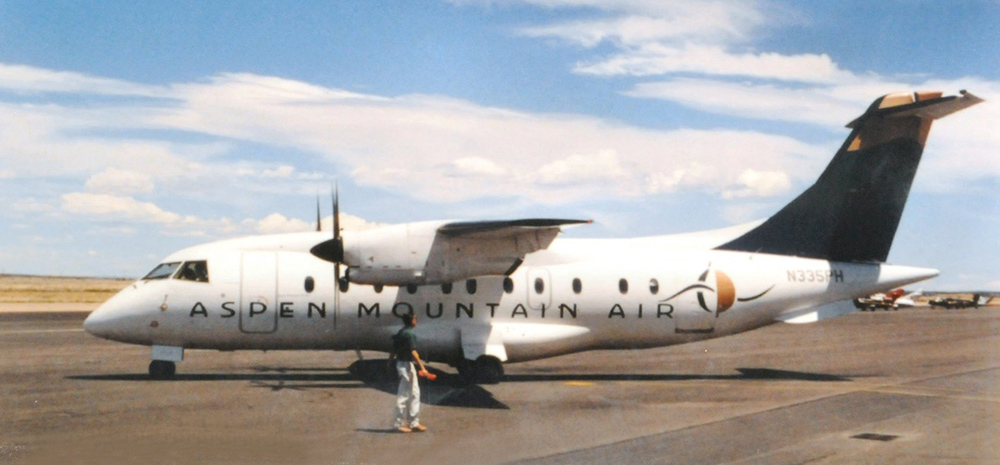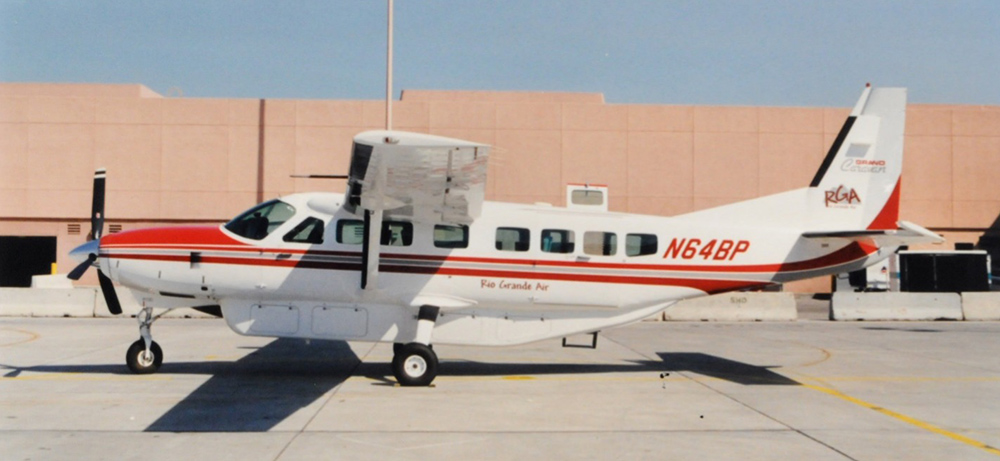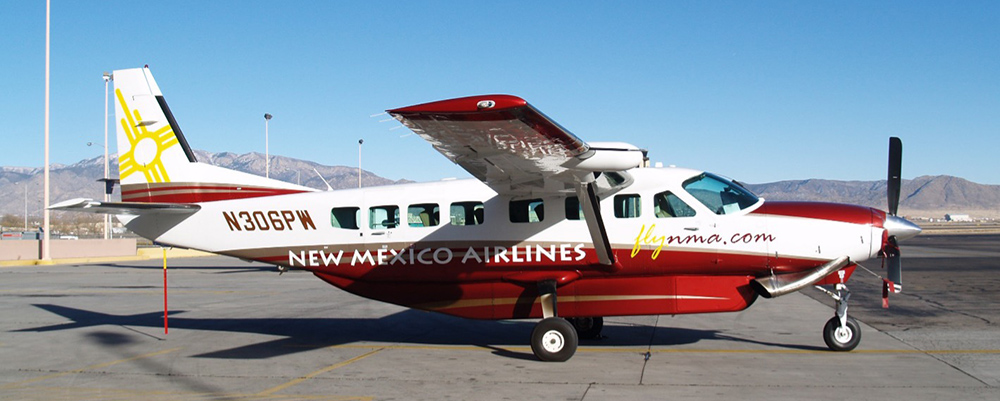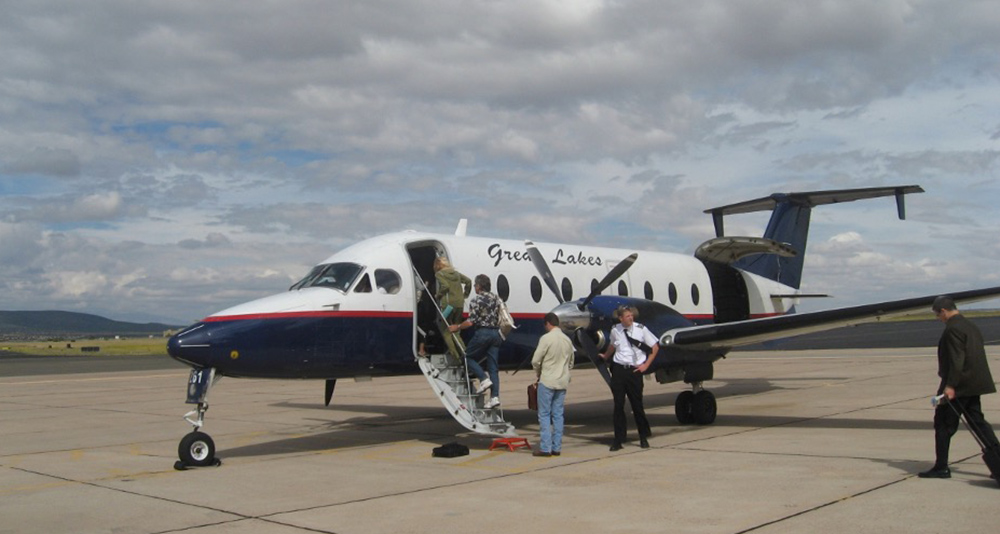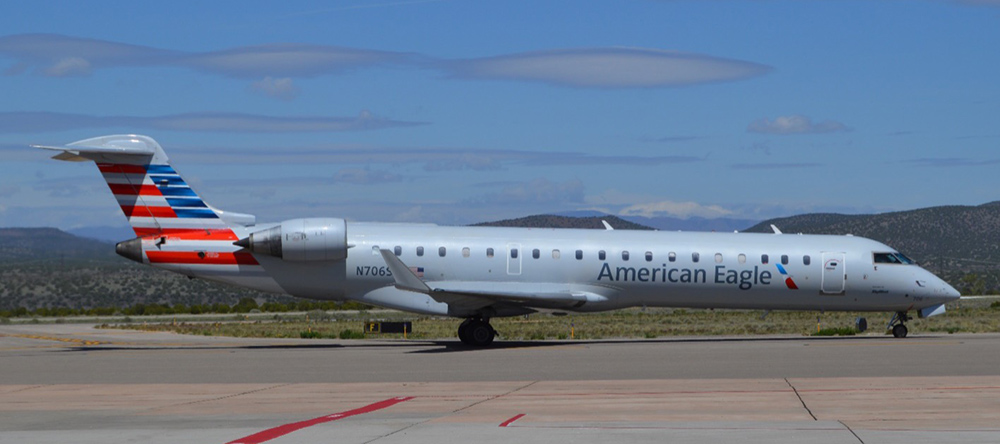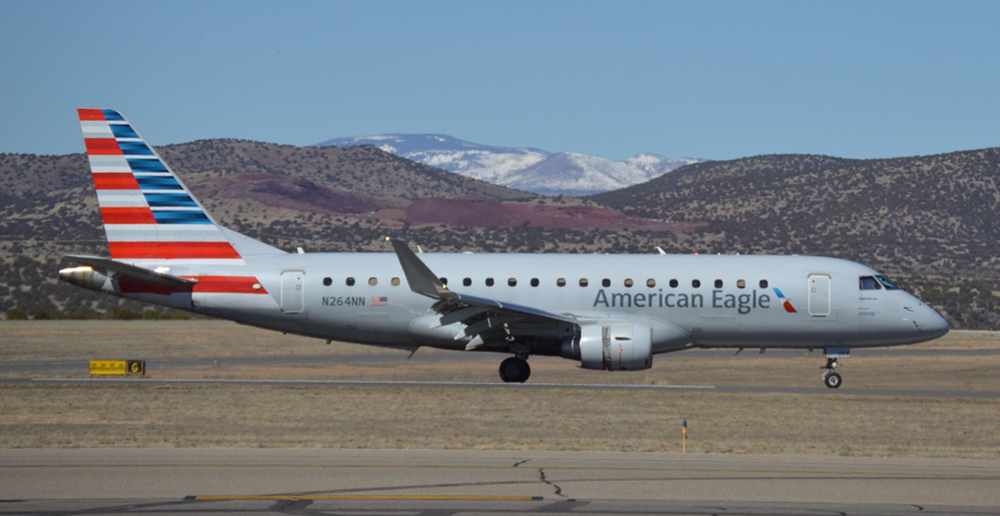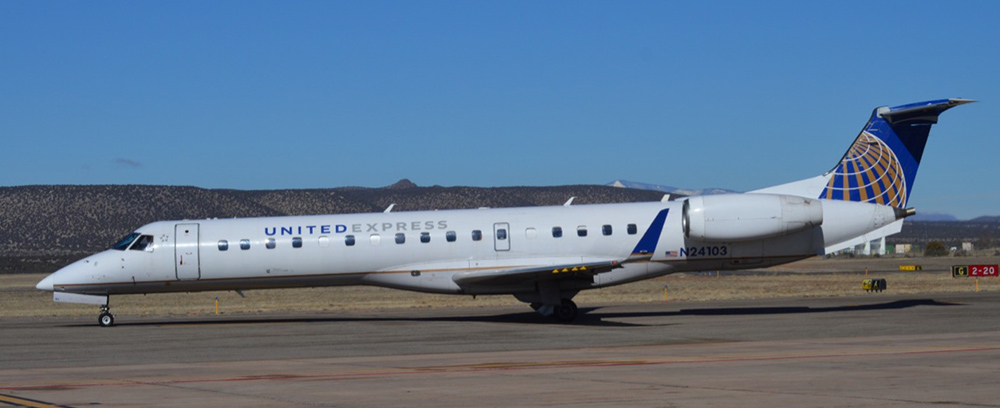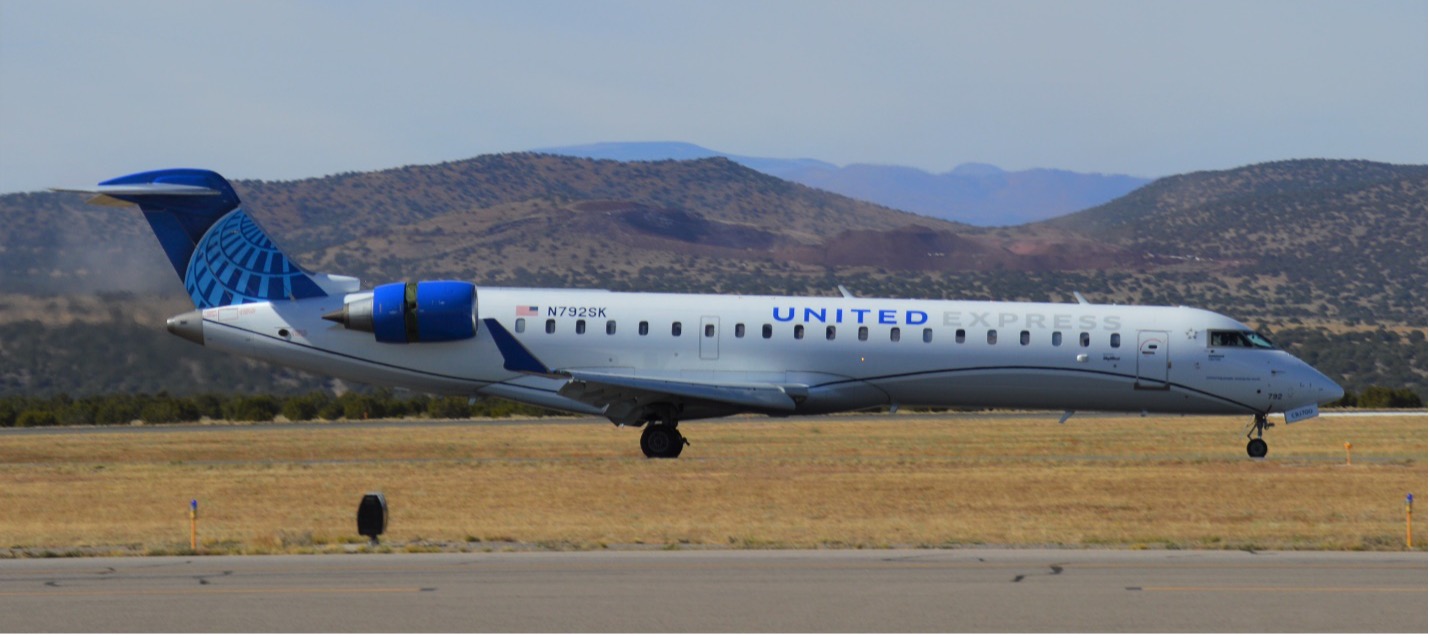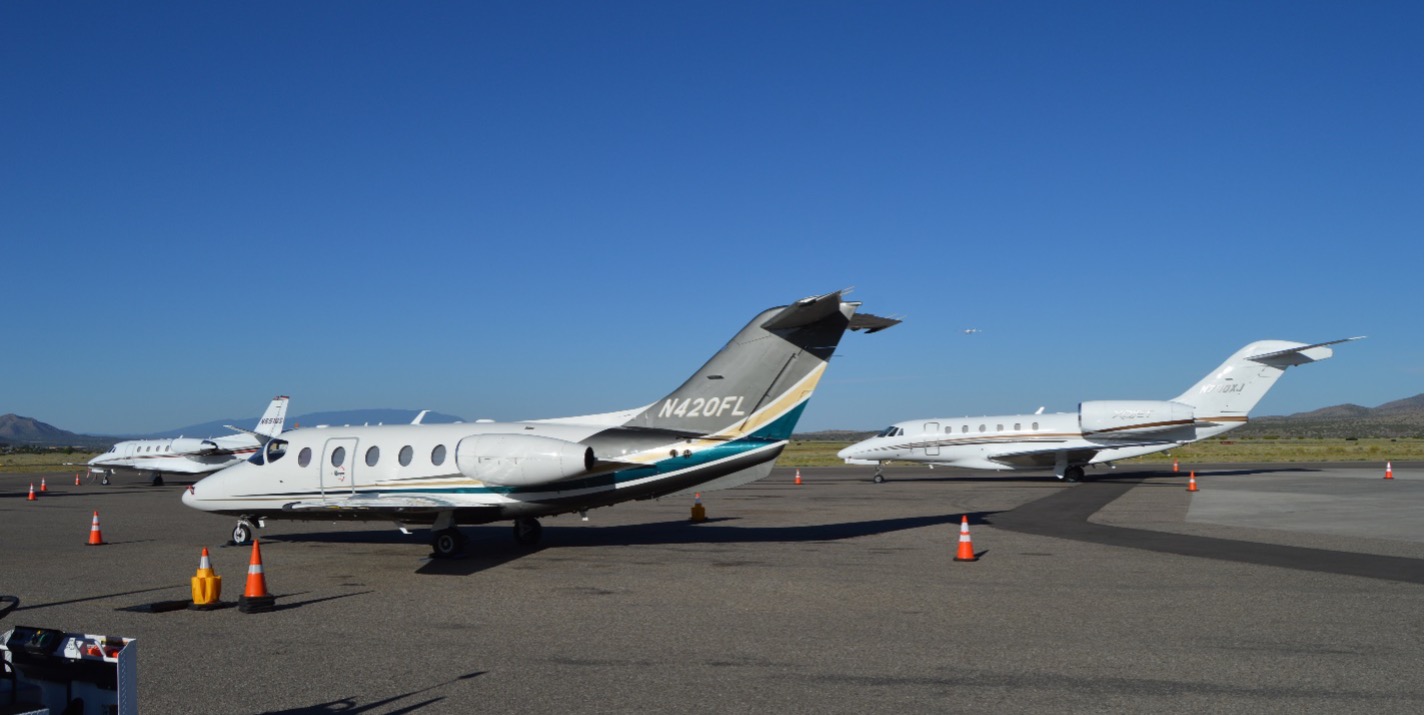COMMERCIAL Airport
Santa Fe Regional Airport
Regional Airfield
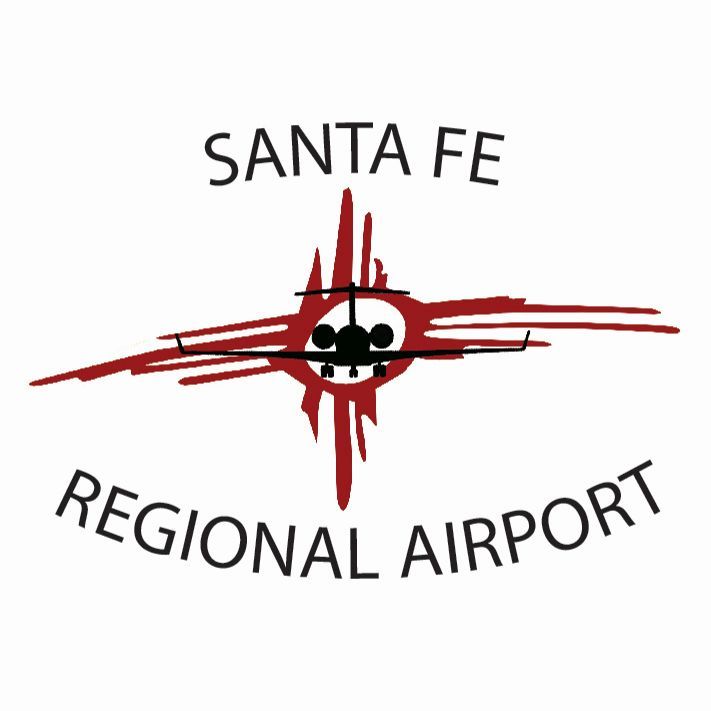
The Santa Fe Regional Airport is the second busiest commercial airfield in New Mexico. The airport has three runways, and a control tower mounted on top of the 18,500 square foot terminal. Airline service is currently provided by American Eagle and United Express with flights to Dallas/Fort Worth, Denver, Houston, and Phoenix, all operated with regional jets. The airport also sees extensive traffic by small charter and private jets.
The Santa Fe Regional Airport was first constructed in 1941 as a military airfield during the anticipation of the United States involvement in World War II. The airport was completed in 1942 and after the war ended in 1945, it was sold to the city of Santa Fe. Prior to 1945, commercial activity had been operated at the former Santa Fe Municipal Airport/Boyd Field located a few miles to the northeast of the new airport. In 1955 a joint venture was reached with Santa Fe County and the new airport was then called the Santa Fe County Municipal Airport. The current terminal building was opened in 1957, updated and renovated in 1988, 2004 and 2016. The original terminal still stands and is now used by Signature Flight Support.
In the 1950’s Santa Fe was served by three air carriers; Continental, Pioneer, and Trans World Airlines, “TWA”. Pioneer merged into Continental Airlines in 1955 and TWA left the airport in 1960 leaving only Continental. In 1963, Continental transferred its routes at Santa Fe to two local service airlines, Frontier Airlines and Trans-Texas Airways which later became Texas International. Trans-Texas began the first jet service to the airport by operating the Douglas DC-9 on select flights from 1967 through 1970. In June, 1972, both Frontier and Texas International abruptly ended service citing unsafe runway conditions after multiple aircraft received prop damage from deteriorating asphalt. Neither carrier ever returned and the Santa Fe airport then began receiving service by commuter airlines operating much smaller aircraft.
In 1983 Santa Fe saw its first code-share service when the commuter airline serving the airport at the time began a code-share relationship with Continental Airlines. Smaller 19-seat aircraft were mostly used. This code-share service ended after two years however several new code-share alliances then served Santa Fe between 1995 and 2002 having partnerships with American, America West, and United Airlines and still using prop aircraft. The airport lost all airline service at the end of 2007 and went without service until June, 2009 when American Eagle began flights with 50-seat regional jets. United Express followed, beginning service in 2013, also using regional jets, Passenger traffic then took off and by 2019 more than 283,000 passengers were accommodated on as many as eleven flights per day through the small terminal which was over 60 years old by then and had not been expanded.
To help accomodate the greatly increasing traffic, the terminal was remodeled in 2016 where much of the restaurant was removed for added space to the gate area and security checkpoint. The airport manager’s office was converted to a baggage claim while the manager and administration were moved into a portable building. In 2018 the airport was renamed to the Santa Fe Regional Airport as it was then marketed as serving nearby Los Alamos, New Mexico as well. In early 2022 the airport finally began a major expansion and upgrade project where the terminal is expanding by 7500 square feet on the northeast side adding more gate space as well as new administration offices. The roadways and parking areas are being reconstructed and a considerable amount of new parking is being added. Baggage claim has been moved into a separate portable building on the southwest side. The project was planned for completion in January, 2023 however a series of delays has set back the completion until early 2024. A second expansion phase is planned for the future where a 13,000 square foot addition will be made to the southwest side of the terminal providing new baggage claim space and a restaurant.
The Santa Fe Regional Airport is also home to the New Mexico Army National Guard.
Historical commercial airline service:
Commercial Terminal
Commercial airline service began at Santa Fe on September 21, 1929 when Mid-Continent Air Express initiated a north-south route between Denver and El Paso stopping at Colorado Springs, Pueblo, Las Vegas, NM, Santa Fe, and Albuquerque. Single engine Fokker 8 Super Universal aircraft were flown. Mid-Continent was formed with the help of Western Air Express which was operating several other routes throughout the nation including a Cheyenne-Denver-Colorado Springs-Pueblo route. On September 27, 1931, Mid-Continent was merged into Western Air Express which continued operating the entire north-south route until late 1933.
Varney Speed Lines then began serving the north-south route beginning on July 15, 1934. Varney used Lockheed 5 Vega aircraft and only operated the portion of the route from Pueblo to El Paso. This carrier changed its name to Continental Air Lines on July 8, 1937 and the route was extended north to Denver once again. Continental began operating Lockheed Electra aircraft which were soon upgraded to Lockheed Lodestars. The stop at Las Vegas, NM was suspended but restarted by 1941. In 1944 Continental upgraded its aircraft fleet to the Douglas DC-3 and a new stop was added at Trinidad, Colorado on the Denver to El Paso route. By 1950 several more stops were added at Raton, Socorro, Truth or Consequences, and Las Cruces, NM however by this time multiple daily flights were operating and only one flight each day made all ten stops between Denver and El Paso. Continental continued upgrading its aircraft with larger Convair 240’s and 340’s and many of the stops at the smaller cities were short lived and discontinued through the early 1950’s. By 1958 only the stops at Colorado Springs, Pueblo and Santa Fe were still made between Denver and Albuquerque but a new stop was added at Alamogordo on the route to El Paso. In 1959 Continental further upgraded its aircraft with the four-engine Vickers Viscount II.
Meanwhile a second carrier, Pioneer Air Lines, began serving Santa Fe on May 1, 1948 as a stop on an Albuquerque to Dallas route which also included stops at Las Vegas, Tucumcari, and Clovis, New Mexico as well as at Lubbock, Abilene, Mineral Wells, and Fort Worth, Texas. Pioneer began by operating DC-3 aircraft and upgraded to Martin 202’s in 1952 however reverted back to the DC-3’s a year later. The stops at Las Vegas and Tucumcari were discontinued in the early 1950’s and Pioneer merged with Continental Airlines on April 1, 1955 giving Continental the route between Albuquerque and Dallas.
As Continental Airlines began a significant expansion into big cities and acquiring large jets in the early 1960’s, service to most of its smaller cities was discontinued. The El Paso-Alamogordo-Albuquerque-Santa Fe-Pueblo-Denver route was transferred to Frontier Airlines on July 10, 1963 and the Albuquerque-Santa Fe-Clovis-Lubbock-Abilene-Fort Worth-Dallas route that was acquired from Pioneer was transferred to Trans Texas Airways on November 5, 1963. Both carriers began serving these routes with DC-3 aircraft. Frontier upgraded to Convair 340’s and again to Convair 580’s through the mid 1960’s while Trans Texas upgraded to Convair 240’s and Convair 600’s. In 1967 Trans Texas introduced Douglas DC-9 jet service on an Albuquerque-Santa Fe-Midland/Odessa-Dallas route and soon introduced a nonstop flight from Santa Fe to Dallas. The carrier changed its name to Texas International Airlines in 1969 and the DC-9 jet service to Santa Fe ended in 1970. Both Frontier and Texas International abruptly ended all service to Santa Fe in June, 1972 citing unsafe runway conditions. Neither carrier ever returned.
Trans World Airlines (TWA) also served Santa Fe from 1948 through 1960 as a stop on their coast-to-coast route between Los Angeles and New York. At first Santa Fe was a stop between Winslow, Arizona and Amarillo, Texas but was later changed to be a stop between Albuquerque and Amarillo. DC-3 aircraft were initially operated followed by Martin 404’s and ending with the Lockheed Constellation.
A series of commuter airlines served Santa Fe from 1963 through 2013 as follows:
Bison Airlines 1963-1964: Santa Fe-Albuquerque-Roswell-Artesia-Hobbs-Midland/Odessa route using DeHavilland Dove and Aero Commander aircraft.
Trans Central Airlines 1966-1969: Albuquerque-Santa Fe-Raton-Trinidad-Pueblo-Denver route using Cessna 402 aircraft.
Trans American Airways 1976-1977: Santa Fe-Denver, Santa Fe-Taos-Denver routes using Cessna 402 aircraft.
Trans Western Airlines 1977-1978: Albuquerque-Santa Fe-Denver using Beech-18 aircraft. Later in 1978 one flight between Santa Fe and Denver began making stops in Espanola and Taos, New Mexico as well as Alamosa, Colorado.
Zia Airlines 1974-1980: Denver-Santa Fe-Albuquerque-Las Cruces-El Paso and Albuquerque-Santa Fe-Farmington routes using Cessna 206, Cessna 402, and Handley-Page Jetstream aircraft. The company changed its name to Air New Mexico in 1980.
Stahmann Farms 1980: Santa Fe-Albuquerque-Las Cruces route using a Cessna 402 aircraft.
Pioneer Airlines (second) 1981-1985: Santa Fe-Denver route with an occasional stop at Alamosa, Pueblo, or Colorado Springs using Beech 99 and Swearingen Metroliner aircraft. The carrier began a code-share relationship with Continental Airlines in 1983 becoming Continental Commuter.
Great Southwest Aviation 1985: Santa Fe-Roswell route using a Piper Cheyenne aircraft.
JetAire 1985: Santa Fe-Albuquerque-Las Cruces route using a Handley-Page Jetstream aircraft.
Territorial Airlines 1990: Albuquerque-Santa Fe-Roswell route using a Piper Navajo aircraft.
Mesa Airlines 1985: Albuquerque-Santa Fe. 1988-1995: Albuquerque-Santa Fe-Taos and Albuquerque-Santa Fe-Denver routes using Cessna 208 Caravan, Beech-99, Beech-1300, and Beech-1900 aircraft.
Mesa Airlines/United Express 1995-1998: Santa Fe-Denver route using Beech-1900D aircraft.
Mesa Airlines/America West Express 2000-2001: Santa Fe-Phoenix route using Beech-1900D aircraft.
Great Lakes Airlines/United Express 1998-2002: Santa Fe-Denver route using Beech-1900D aircraft. The carrier operated as many as twelve daily flights on this route.
Great Lakes Airlines 2002-2008: Albuquerque-Santa Fe-Denver route. 2012-2013: Denver-Santa Fe-Clovis and Denver-Santa Fe-Phoenix routes all with Beech-1900D aircraft.
Santa Fe was without any commercial air service from early 2008 until mid-June, 2009 when the following major airline code-share carriers began serving the city with regional jets:
American Eagle began service on June 11, 2009 with flights to Dallas/Fort Worth using Embraer-140 and Embraer-145 regional jets. Canadair CRJ-200 jets were later introduced and all flights were converted to Canadair CRJ-700 jets in 2017. Service to Los Angeles was operated from late 2009 through late 2015 using Embraer-140 and CRJ-200 jets and service to Phoenix began on December 15, 2016 with a CRJ-700 regional jet. Contract airlines serving as American Eagle include Envoy Air, ExpressJet, and SkyWest Airlines. By late 2018 all flights were operated by SkyWest. Mesa Airlines began American Eagle service on May 3, 2019 with a daily flight to Phoenix using a CRJ-900 regional jet. Two of the daily flights to Dallas/Fort Worth were upgraded to Mesa CRJ-900 jets on March 5, 2020 and a third was planned for May however the COVID-19 outbreak caused a significant decrease in service including all flights to Phoenix.
Three flights to DFW operated from July 2020 until June 2021. Phoenix flights resumed on June 3, 2021 and a Saturday only flight to Los Angeles was added for the summer of 2021. The fourth daily flight to DFW was reinstated on August 17, 2021 however service to DFW is scaled back to three daily flights during the winter months. All flights were operated by SkyWest with CRJ-700 aircraft. In early 2023, Envoy Air returned and some of the flights to DFW and Phoenix began operating with Embraer-175 regional jets on both Envoy and SkyWest. Service to Phoenix was reduced to one daily flight in mid-2023 while service to DFW increased to as many as five flights per day during the summer and fall months. A Saturday only flight to Austin, Texas was added for the month of October, 2023.
United Express returned to Santa Fe with flights to Denver on May 1, 2013 using Embraer-145 regional jets operated by ExpressJet Airlines. TransStates Airlines took over the United Express route in 2015 using the same Embraer-145 jets. During October, 2018, SkyWest supplemented TransStates with Canadair CRJ-700 flights to Denver. During October of 2019, TransStates increased service to Denver to five daily flights. TransStates was shut down on April 1, 2020 at which time SkyWest took over the United Express service to Denver operating one daily flight using a CRJ-700 aircraft. This flight was later downgraded to a CRJ-200 aircraft. Service began transitioning to CommuteAir on March 28, 2021 using Embraer-145 RJ’s and the last SkyWest flight departed Santa Fe on October 30, 2021. As of April, 2023, CommuteAir flies three flights per day to Denver and is planning a fourth flight in May, 2024. A new nonstop flight to Houston on Saturdays only is planned to begin in March, 2024.
Delta Connection, operated by ExpressJet, announced plans in December, 2007 to serve Santa Fe from both Los Angeles and Salt Lake City using Embraer 145 regional jets. The plans were delayed and later cancelled due to an environmental assessment for the Santa Fe airport followed by the state of the economy at that time.
During October of 2019, service peaked with a total of 11 daily flights on American Eagle and United Express. This level of service has not yet been reached again since the outbreak of the Covid-19 pandemic but may do so by the summer of 2024. The expanded terminal should also be complete by that time and the airport will be much better capable of handling the traffic.
Santa Fe also sees an extensive number of corporate, private, and private charter operations as seen below.

